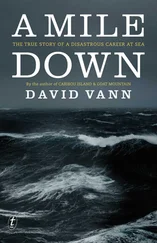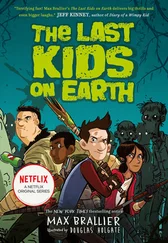Jerry Santoni is in a squad car, listening to the police radio. There’s some confusion, because DeKalb isn’t set up yet on the newer radio system, and the police think at first that there might be more shootings in the library. They dispatch officers to check it out. They also follow up on a report of a trail of blood that turns out to be only syrup.
There are still a lot of students and teachers hiding in various rooms in all the surrounding buildings, still afraid the shooter might be going from room to room. Alexandra and the other students in the sociology lab will wait for two and a half hours. They’re finally able to reach the sociology office by a landline and are given the okay to go outside at 5:30 p.m.
By 3:45 at Kishwaukee, the rooms are jammed and family and friends are arriving, taken to the conference center in the lower level. The hospital has social workers, EAP (Employee Assistance Program) staff, and volunteers available immediately to talk to the families and also to help find out who the patients are. There are numerous problems with identification. But everyone is doing their best, an impressive response. Two radiologists are doing “wet reads” of the X-rays, for instance, so there’s no time wasted calling back and forth to get radiology reports.
The X-rays are disturbing. One nurse will say later she’s haunted by the “silhouette of bullets,” all the round shotgun pellets and larger pistol bullets transposed on the bodies. One shows two bullets inside the victim’s head. The X-rays look impossible to me, unaccountably brutal.
Phlebotomists are on hand to collect and label blood and send it to the lab via pneumatic tubes. And as everyone at the hospital works, NIU is also working. They schedule a media briefing for 5:30. They’re putting updates on their website and have a campus alert system in place that was activated by 3:20, sending out warnings by email, telling students to stay in their rooms, telling everyone to stay away from campus, and cancelling all classes. At 4:10, they let everyone know that the immediate crisis is over. By 4:15 they’ve sent a crisis staff to the hospital to help students and families, and the chair of NIU student services is there to help identify students.
At 4:53, the last patient arrives at Kishwaukee. The dead have not been brought to the hospital yet, though, and the family of one of these students arrives at 5:30. They’re met by a social worker. Steve’s story has ended, but for everyone affected, the story is just beginning.
Not everything goes smoothly. Jerry Santoni, for instance, has left his keys and cell phone in Cole Hall, but he can’t get them back, and no one will give him a ride. His head injury and concussion aren’t considered severe enough. “I was told ‘the late night ride service will start up in two hours.’ I was also told, ‘people have been shot — your keys can wait.’”
The shooting is so impossible and disturbing for the victims, none of them can remember it entirely clearly, even that day at the hospital as they’re interviewed by police. Joe Peterson was on stage with Steve, for instance, and he remembers white and red on a black T-shirt, but he doesn’t put together that the red graphic was of an assault rifle, and his mind transposes “Terrorist” to “Anarchy.” He also tells police that he thinks at least ten shots were fired by the shotgun, and that the pistol was silver. He hasn’t had time to lose memory. Rather, his mind changed things from the moment they happened, and this is true for everyone in the room.
“I was there and I can still barely imagine what it was like,” Joe says. “It wasn’t real.”
“I remember it, but it’s like it was a dream or something,” Brian Karpes says.
Not one of the witnesses interviewed by police correctly identifies Steve’s shirt. Several think he was wearing a hoodie (a sweatshirt with a hood), though most recognize that he was wearing a separate black stocking cap. The clearest description of Steve in the police interviews comes from Jamika Edwards, and I believe she remembers him most clearly because at first she thought it was just a joke. She wasn’t as panicked initially, so she was able to see. But even her description is transposed, thinking he may have had red hair, for instance, picking up the red graphic on the T-shirt. She says “he had a ‘stoned’ look on his face” and “his clothing was typical of someone you would see on TV that would do this.”
As Joe Peterson is being treated for the minor wound to his arm from that one pistol bullet, he feels tremendous survivor guilt. “I thought Brian was dead. I asked the hospital if Brian was okay but they told me, ‘We can’t release that information.’ I didn’t know for forty hours. We call Brian ‘Superman’ now, because the bullets just bounce off of him.”
At 6:00 p.m., three hours after the shooting, the hospital makes contact with the DeKalb County coroner regarding the victims who have died in Cole Hall. This is the first time, really, that the hospital finds out what has happened. They’ve been responding and treating victims but without context. Within an hour after that, at 7:00, their emergency department operations return to “normal,” according to their PowerPoint, including restocking supplies and cleaning. The immediate crisis has passed.
An hour later, the coroner and state police arrive at the hospital, and the hospital is still talking with families of victims until 11:00 p.m., including having to tell some families that their loved one has died. It’s not until midnight that the dead bodies arrive. They’re X-rayed, cleaned, and prepared for viewing. The PowerPoint slide asks, “Who is going to help with this?”
The next day, the focus is on the media, titled “Fast and Relentless” in the PowerPoint presentation. “Be prepared for the amount of media presence during a disaster.” The hospital, after their experience, recommends prepared statements by only a few designated speakers: “Think before you speak.”
The media is certainly invasive, insensitive, and sloppy, with almost no fact checking. “It was weird reading news reports that I was dead or Brian was dead,” Joe says. “I read that my head was blown off. I still read that I was the first one shot, but I wasn’t. I read I was chased around in the auditorium, but that wasn’t true. Why didn’t the media fact-check? I read that a student saw me on a gurney with half my face missing. My sister’s watching the news hearing that the instructor was the first one killed. The media has the attitude of ‘It’s the truth now, and tomorrow the truth may be different.’”
“There were reports that the TA passed on in the night,” Brian says. “My aunt and advisor both thought I was dead. And my aunt couldn’t get through to my mom because of a dead cell phone, so for a day and a half, my aunt thought I was dead.”
“The Today Show offered tickets to New York with Broadway tickets, etc., for my sister’s whole family if she could get me to appear on the show the next day,” Joe says.
The problem is that everyone wants to know who the shooter really was and how this could have happened. Especially since Steve was a Deans’ Award winner, a top grad student, someone “revered” by faculty, students, and administration. That’s why the media is so invasive. They know they’re not getting the full story. Even the nurses working at Kishwaukee sneak up to look at Steve’s body. We just want to know. Joe himself will become obsessed with the event. He’ll look up everything on Columbine and Virginia Tech, days online, but at some point, he says, “I realized I can’t do this anymore. And I went through all of that for nothing. I didn’t learn anything.”
What amazes Joe most is that more people weren’t hurt. “Six with the shotgun and forty-eight with the pistols,” he says. “And he hit less than thirty people. Thank God he was a piss-poor shot.”
Читать дальше












